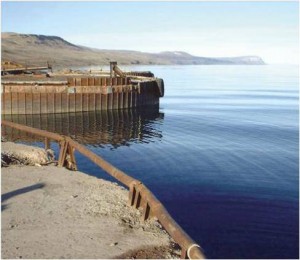Lee Berthiaume’s Postmedia News article on 8 May, entitled “Armed Arctic vessels face delay in latest procurement setback,” reports a further three-year delay in procurement of these ships. If true – the NDHQ procurement website continues to quote an in-service date of 2016 for the first ship - that is unfortunate, but the glass need not be half empty. Looking on the bright side, if there is such a delay the AOPS design would be further refined and Irving Shipbuilding Inc., the Halifax shipyard assigned by the National Shipbuilding Procurement Strategy (NSPS) to build AOPS, should be fully ready to construct them. It may be that part of the delay is due to ramping-up a relatively dormant industry: unless we bring in ship builders from other countries, it will take time to train our people and assemble a skilled workforce to perform the requisite specialist tasks. AOPS will be constructed to an internationally recognized ice navigation classification, requiring high-strength steel and special welding techniques, and it will be quite a complex vessel. One would hope that when the many government vessels under NSPS begin to be built that steady-state efficiency would be achieved in the two major shipyards in Halifax and Vancouver.

Another cost- and schedule-driver will surely be the docking and refuelling facility in Nanisivik – there is very little existing infrastructure upon which to build, beyond a very basic dock left over from when ships were loaded with ore from a long-closed lead and zinc mine. Perhaps what is needed, beyond the basic dock, is an ice-capable support vessel that could berth an AOPS alongside – a mobile base in effect, providing all of the repair parts, expertise, food, fuel, and other resources necessary to sustain these vessels. Fresh food could be resupplied and personnel replaced from the south via air into the nearby airport at Arctic Bay. At the beginning of the navigation season this support ship would deploy to Nanisivik from Halifax, returning to that base after the last AOPS departs.
Certainly a deep-water shore base in the vicinity of the North-West Passage is a good idea, but I submit that there are other ways to sustain naval patrol operations – especially in the initial years – and it need not be a determining factor in establishing a naval presence in those waters.
Finally, do naval patrols in the Canadian Arctic have to wait for these new vessels? Are there other ways of inserting the navy into the Arctic? Why can’t we charter or lease a vessel in the interim, complete with qualified specialists if necessary? What about more naval exchange positions in Canadian Coast Guard icebreakers and northern supply vessels so that RCN personnel can gain additional knowledge of these waters? Indeed, maybe we could embark some of our naval personnel in some of the cruise ships now making our northern waters part of their summer itinerary – anything would be better than simply waiting for AOPS to be built!
Hopefully someone in National Defence Headquarters is also thinking about what can be done to enhance the navy’s knowledge of our Arctic coastline, and thus their future ability to provide a presence in the North, while the actual building of the ships continues to languish.


